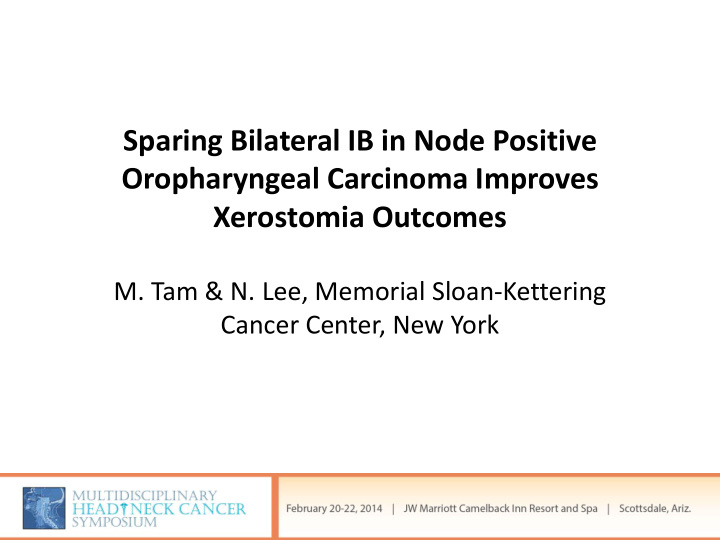



Sparing Bilateral IB in Node Positive Oropharyngeal Carcinoma Improves Xerostomia Outcomes M. Tam & N. Lee, Memorial Sloan-Kettering Cancer Center, New York
Background/Purpose • Radiation therapy is important in the treatment of head and neck cancers. • Most common side effect is poor salivary function (xerostomia). • Intensity modulated radiotherapy (IMRT) allows for sparing of healthy tissue. • This study evaluates whether treatment sparing of the submandibular glands (neck level IB) can result in better salivary function.
Materials/Methods • 125 patients with OPC received chemoradiation • May 2010 – December 2011 • Sparing(n=40); without sparing (n=85) • Salivary toxicity assessment o Self-reported (previously validated questionnaire) o Observer rated (physician assessment) • Dosimetric analysis of the salivary glands
Salivary Function and Radiation Doses P = 0.021 39.5 52.4 Patient-reported Good Poor 0 20 40 60 80 100 Observer-rated Improvement to 1.4 from 1.7 (p = 0.005) Average radiation dose to salivary organs SMG 1 SMG 2 45.0 56.2 63.9 70.5 Oral cavity 36.1 Gy <= 45.2 Gy 0 15 30 45 60 75 (Gy) Excellent 2-year local-regional control of over 90%
Conclusions • Sparing salivary structures (submandibular glands) in oropharyngeal cancer improved quality of life in patients by decreasing dry mouth. • Sparing these structures was safe and did not compromise disease outcomes (loco-regional control).
Recommend
More recommend